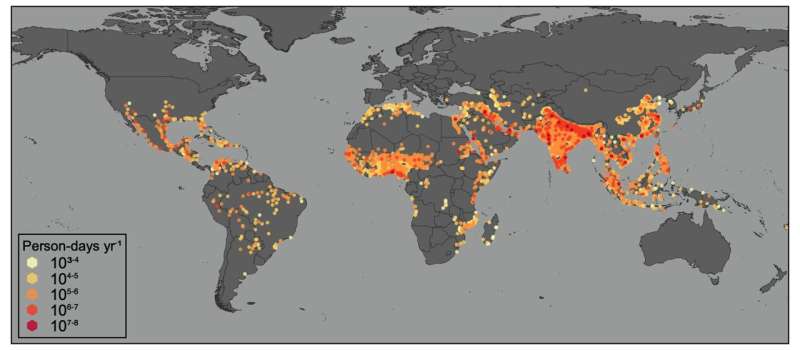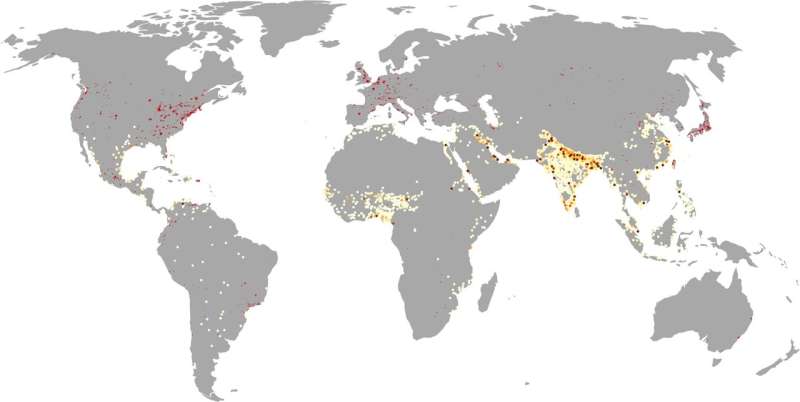What’s With All These Extra Ballot Questions?!
Here’s what’s behind each one.
TAYLOR LAMBERT• ALBERTA POLITICS, CALGARY POLITICS • OCTOBER 04 2021
Albertans will be voting for more than just mayors, councillors and school board trustees on October 18. They’ll also be weighing in on referendum questions on several controversial subjects.
The two issues on the ballot—three, if you live in Calgary—are more complex than the political rhetoric around them might suggest. But in order to make an informed choice, it’s worth taking time to understand some of the basics behind each question.
#VOTE NO
Ballot question No. 1: Equalization
“Should Section 36(2) of the Constitution Act, 1982—Parliament and the government of Canada’s commitment to the principle of making equalization payments—be removed from the Constitution?”
Let’s get this out of the way: Equalization is not only a federal matter, it’s in the Canadian constitution. Amending the constitution requires agreement from seven provinces representing 50% of the population of Canada. In the face of this high threshold for altering the fundamental structure of the confederation, a “yes” vote by one province is meaningless.
This is acknowledged on the Elections Alberta website, which notes that “the result of this vote is binding only on the provincial government to pursue the action directed by the majority vote, not on the federal government to amend the Constitution Act, 1982.”
But it’s worth examining why this question is being put to Albertans.
In the face of this high threshold for altering the fundamental structure of the confederation, a “yes” vote by one province is meaningless.
Equalization is often presented as something so complicated and mysterious that few could ever hope to understand it. But this is an exaggeration that only benefits certain academics and politicians.
The fundamentals are straightforward. The federal government makes equalization payments to provinces whose “fiscal capacity”—their ability to generate tax revenue—is below the national average. The goal of the program is to ensure “reasonably comparable” public services are provided across the country. (All provinces receive federal funding via the Canada Health Transfer and Canada Social Transfer.)
Unpacking the calculation formula used to determine which provinces receive payments is beyond the scope of this article, but in simplified terms, the national average tax rate is applied to a province’s tax base to determine its fiscal capacity; if it is lower than the average fiscal capacity of all provinces, equalization payments bring it up to par.
Haizhen Mou, a professor of public policy at the University of Saskatchewan, compares it to a family sharing resources.
“All siblings contribute to the family and the parents reallocate the money among siblings to ensure comparable living standards,” she said.
Jason Kenney’s complaints that Alberta is getting screwed by the equalization program are the latest and loudest in a long tradition. Those complaints can be summarized as follows: Alberta’s booming economy brings prosperity to all Canadians, but when our economy falls along with oil prices, we are still sending money to Quebec. Unfair!
This framing misstates the purpose of the equalization program, which is not to ensure that all provinces have similar economic outcomes.
I think it’s a distraction or diversion from the real problems Alberta is facing.
UNIVERSITY OF SASKATCHEWAN
It’s worth noting that for 2021/22, Quebec receives the lowest total amount per capita in major federal transfers of the five provinces receiving equalization payments. Alberta’s per capita total, meanwhile, is identical to that of Ontario, B.C., Saskatchewan and Newfoundland and Labrador.
“I think it’s a distraction or diversion from the real problems Alberta is facing in terms of fiscal and economic [issues],” said Mou, who said that the referendum outcome will have no practical effect.
“Politicians certainly have the right to do things like this. Because equalization is complicated, it’s a topic that is easy to be manipulated. It’s up to journalists and academics to try to communicate and educate the public.”
#VOTE YES
Ballot question No. 2: Daylight Saving Time
“Do you want Alberta to adopt year-round Daylight Saving Time, which is summer hours, eliminating the need to change our clocks twice a year?”
Daylight saving time (DST) has an interesting history in Alberta.
In 1946 municipal plebiscites, voters in Calgary and Edmonton favoured switching to DST. Instead, two years later the provincial government passed The Daylight Saving Time Act—an ironic name, given that it barred any municipality from observing DST or any time zone other than Mountain Standard Time.
Alberta was still quite a rural province then, and farmers in particular were strongly opposed to the changes. While things like office hours and bus schedules mean city dwellers’ schedules are fixed to the clock, farmers’ working hours are typically determined by daylight. Even if the Social Credit government wanted to introduce DST, the political cost from its rural base would have been too high.
Campaigns against DST have become stronger as more evidence of its negative effects has become clear.
After being narrowly rejected in a 1967 provincial plebiscite, Albertans finally approved DST in 1971, the last province to do so (not counting Saskatchewan, which has its own messy history with time).
Campaigns against DST have become stronger as more evidence of its negative effects has become clear, from health impacts like increased risk of heart attacks, cancer and depression, to public safety concerns over increased traffic and workplace accidents.
This idea of “permanent” DST has been gaining traction recently. Yukon voted for it last year, and several U.S. states have passed bills that will enact it once Congress approves them.
When Russia tried it in 2011, however, the late winter sunrises proved so unpopular that the government reversed the change in 2014.
This may be an important consideration for Albertans: on January 1, Calgary saw the sun rise at 8:37 a.m. and set at 4:42 p.m. Shifting to year-round DST would get us later sunsets, but also sunrises at 9:37 a.m. Northern Alberta currently has a seven hour difference between their winter and summer sunsets; the proposed change would reduce that by one hour in exchange for a five-and-a-half hour seasonal difference in sunrise times.
Shifting to year-round DST would get us later sunsets, but also sunrises at 9:37 a.m.
Still, a 2019 government survey received 141,000 responses, 91% of which were in favour of moving to DST year-round.
The UCP’s rationale for proposing a move to DST rather than year-round standard time is that it would put Alberta out of sync with regional jurisdictions: Saskatchewan observes DST year-round, and B.C. intends to do the same in coordination with west coast American states.
FLOURIDE IS NOT A COMMUNIST PLOT!
Ballot question No. 3 (in Calgary): Water fluoridation
“Are you in favour of reintroducing fluoridation of the municipal water supply?”
Calgarians have been battling over fluoridation for more than six decades.
After rejecting it four times (in 1957, 1961, 1966 and 1971), voters approved fluoridation in a 1989 plebiscite, and reaffirmed that choice in 1999. In 2011, council unilaterally ended fluoridation of Calgary’s drinking water, opting not to hold a plebiscite.
This year’s vote is not binding on council.
Fluoridation has been described as one of the greatest public health achievements of the 20th century. Tooth decay is an ancient human disease, but its prevalence spiked sharply after the Industrial Revolution made refined sugar cheap and available to the masses. Prior to the discovery of fluoride’s decay-prevention properties around the turn of the 20th century, and the beginning of community water fluoridation in North America in the 1940s, tooth decay was widespread and usually treated by extraction
We increasingly keep the majority of our teeth for a lifetime, and fluoride is a major reason why. Between 1970 and 2007, the percentage of Canadian adults with no natural teeth dropped from 23.6% to 6.4%.
This year’s vote is not binding on council.
But dental caries (or cavities) are still a major public health concern in Canada, correlated with factors like race and socioeconomic status. Community water fluoridation, proponents argue, is one effective, safe and relatively inexpensive way to provide a basic degree of dental protection to an entire population.
Arguments against fluoridation are varied, with differing degrees of legitimacy. Its introduction coincided with the beginning of the Cold War, and a far-right conspiracy theory that fluoridation was a Communist plot was parodied in the 1964 film Dr. Strangelove.
Today, critics raise concerns about the effects of fluoridated water combined with fluoridated toothpaste, or that people consume different amounts of water, or that the money could be better spent on targeted dental programs. Others cite discredited or misrepresented research. One argument popular in libertarian-friendly Alberta is consent and freedom of choice. Then there are those whose distrust of science is reminiscent of anti-vaccine propaganda.
Decades of study on fluoridation have established its general effectiveness and safety, though the recommended amount has been revised downward. In 2012, 435 million people worldwide had access to fluoridated water, including about 57 million accessing water that was naturally fluoridated.
The most common risk of fluoridation is fluorosis, which occurs during childhood and is typically characterized by small white spots on parts of the teeth. It’s a cosmetic rather than structural concern, and quite a common one: 41 to 61% of American adolescents have fluorosis. Other risks, such as fluoride toxicity, are rare in the developed world, and often the result of children swallowing fluoridated toothpaste
The benefits, however, are significant. A 2021 University of Calgary study found children in Calgary, after fluoride was removed, were significantly more likely to have dental caries than children in Edmonton (which has fluoridated its water since 1967). The results held even after controlling for socio-demographic factors, diet, dental hygiene habits and other exposure to fluoridation.
A pro-fluoridation group, Fluoride Yes!, has registered as a third-party advertiser during the election period.
Taylor Lambert is The Sprawl's Alberta politics reporter.




